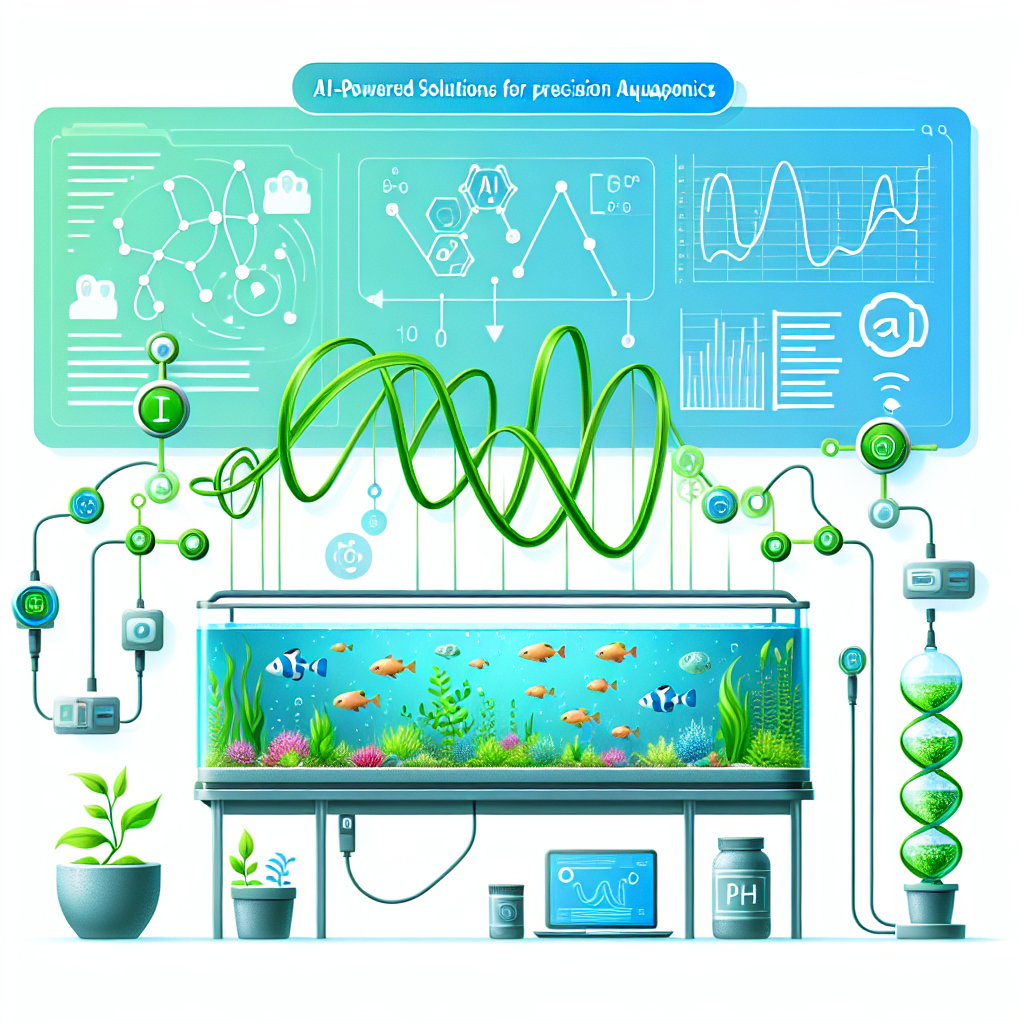Aquaponics is a sustainable farming technique that combines aquaculture (fish farming) with hydroponics (soilless plant cultivation) in a symbiotic system. This innovative approach allows for the efficient use of resources, as the waste produced by the fish is converted into nutrients for the plants, which in turn clean the water for the fish. This closed-loop system is gaining popularity among farmers and gardeners looking for a more environmentally friendly way to grow food.
While aquaponics offers several benefits, such as high crop yields and reduced water usage, maintaining the balance between fish and plant growth can be a challenge. This is where AI-powered solutions come in. By leveraging artificial intelligence and data analytics, farmers can optimize the conditions in their aquaponic systems to ensure maximum productivity and efficiency.
One of the key advantages of using AI in aquaponics is its ability to monitor and control environmental factors in real-time. Sensors placed in the aquaponic system can collect data on water quality, temperature, pH levels, and nutrient concentrations. This data is then analyzed by AI algorithms to provide insights into the health of the system and suggest adjustments to optimize plant and fish growth.
For example, AI can automatically adjust the flow of water between the fish tank and the plant beds based on the nutrient levels in the water. This ensures that the plants receive the right amount of nutrients at the right time, leading to healthier and more productive crops. AI can also predict potential issues, such as nutrient deficiencies or disease outbreaks, before they become a problem, allowing farmers to take proactive measures to mitigate them.
In addition to monitoring and control, AI can also help with decision-making in aquaponics. By analyzing historical data and trends, AI can recommend the best crops to plant based on the season, climate, and market demand. It can also optimize feeding schedules for the fish and recommend the most efficient use of resources, such as water and energy.
Another area where AI-powered solutions can make a significant impact in aquaponics is disease detection and prevention. Diseases can spread quickly in aquaponic systems, leading to poor crop yields and even fish mortality. AI can analyze data from sensors and cameras to detect early signs of disease, such as changes in water quality or fish behavior. It can then alert farmers to take action, such as adjusting water parameters or quarantining infected fish, to prevent the spread of disease.
Overall, AI-powered solutions offer a promising way to improve the efficiency and productivity of aquaponic systems. By leveraging the power of artificial intelligence, farmers can optimize their operations, reduce waste, and increase profitability. As the technology continues to advance, we can expect to see even more innovative applications of AI in aquaponics in the future.
FAQs:
Q: How expensive are AI-powered solutions for aquaponics?
A: The cost of implementing AI-powered solutions in aquaponics can vary depending on the size of the system and the specific technologies used. However, as AI technology becomes more widespread and accessible, the costs are likely to decrease over time.
Q: Will AI replace human labor in aquaponics?
A: While AI can automate certain tasks and optimize processes in aquaponics, it is unlikely to replace human labor entirely. Farmers will still be needed to oversee operations, make strategic decisions, and perform hands-on tasks that require human judgment and expertise.
Q: Are there any risks associated with using AI in aquaponics?
A: Like any technology, AI-powered solutions in aquaponics come with potential risks, such as data security and privacy concerns. It is important for farmers to work with reputable providers and implement proper security measures to protect their systems and data.
Q: Can AI help with pest control in aquaponics?
A: AI can potentially help with pest control in aquaponics by monitoring environmental conditions and detecting early signs of pest infestations. By identifying pest threats early, farmers can take proactive measures to prevent damage to their crops.
Q: How can farmers get started with AI in aquaponics?
A: Farmers interested in implementing AI-powered solutions in aquaponics can start by researching available technologies and consulting with experts in the field. There are also online resources and training programs that can help farmers learn how to integrate AI into their aquaponic systems.

